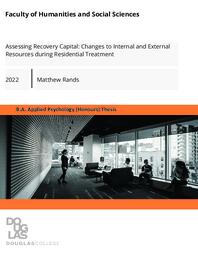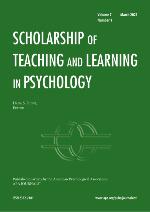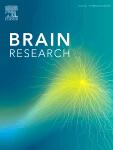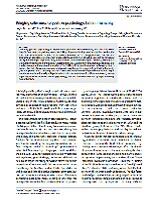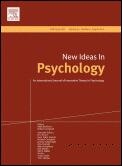Psychology
Related Works
Content type
Digital Document
Abstract
This mixed-methods study examined the perceived effectiveness and user experience of a voice-delivered cognitive behavioural therapy (CBT) exercise using ChatGPT, with the aim of evaluating its potential as a scalable and accessible mental health support tool. Quantitative data from pre- and post-intervention measures of the Thought Control Questionnaire (Wells & Davies, 1994) revealed significant improvements in adaptive thought control strategies (social control, reappraisal) and decreases in maladaptive strategies (worry, punishment). Qualitative data, analyzed through inductive thematic analysis of open-ended responses, revealed participants' recognition of the intervention's human-like responses, immediacy, and insight. Ethical concerns in mental health care are critical, and in this study, all artificial intelligence (AI) outputs were rated as neutral and appropriate, with 92% of participants feeling neutral or safe while engaging with the exercise. System- and user-level limitations were identified, including interruptions during user input and unfamiliarity with the platform's features and capabilities. Findings support generative AI as a promising adjunct to traditional therapy in expanding access to psychoeducational tools. Future research should explore longitudinal effects, address additional ethical considerations, and evaluate outcomes across diverse populations to ensure equitable and effective use.
Origin Information
Content type
Digital Document
Abstract
Autistic burnout, characterised by chronic exhaustion, reduced tolerance to stimuli, and loss of executive function skills (Raymaker, et al., 2020) has severe consequences, including heightened mental and physical health problems, reduced capacity for independent living, decreased quality of life, and suicide attempts (Arnold et al., 2023a; Higgins et al., 2021; Mantzalas, Richdale, Adikari, et al., 2022b; Raymaker et al., 2020). Although autistic burnout has been validated as a syndrome that is distinct from depression and occupational burnout (Higgins et al., 2021; Raymaker et al., 2020), it is unclear if mental health treatment providers are able to distinguish depression from autistic burnout (Rose, 2018). Yet, some treatments such as Cognitive Behavioural Therapy (CBT) and Behaviour Activation (BA) may be ineffective or contra-indicated (Higgins et al., 2021). Considering the limited literature on autistic burnout, the complexity of treating it, and the possible harm involved in providing a treatment that may be contraindicated, it is critical to gain a deeper understanding of this syndrome. This study aimed to explore Autistic experiences accessing treatment for autistic burnout and their perspectives on the effectiveness of the treatments that were offered to them. Eleven participants completed semi-structured interviews. Qualitative analysis was informed by an interpretive phenomenological analysis (IPA) framework using a hybrid inductive-deductive approach at a semantic level. Participants reported that clinicians often failed to identify autistic burnout and generally lacked knowledge of the condition. Misdiagnoses were common, leading to treatments that delayed recovery and exacerbated symptoms of autistic burnout. Participants described negative experiences accessing support, including lack of support services, which eroded their faith in the healthcare system. Potential effective treatments and supports were identified, primarily the need for rest and practical support. These findings highlight the need to raise awareness among clinicians about the nature of autistic burnout, the importance of collaborating with the Autistic client to develop a treatment plan, and the general need for more services for Autistic adults.
Origin Information
Content type
Digital Document
Abstract
This research study attempted to understand the mechanisms in which cultural values, acculturation status, and systemic barriers affected Asian Canadians attitudes towards accessing mental health resources. The sample of 134 students, staff and faculty affiliated with Douglas College were tasked with completing an online survey which consisted of three self-report measures, and questions regarding mental health related experiences. These measures assessed participants level of adherence to Asian American values, acculturation orientation, as well as their attitudes towards seeking mental health services. The multiple linear regression performed suggested that adherence to Asian American values were strongly predictive of scores on attitudes towards seeking mental health resources. The study also found that there were significant mean differences in attitudes toward seeking mental health resources, with participants who were more oriented towards Canada having higher scores compared to participants more oriented to their home culture. The study’s results are consistent with previous literature and contribute deeper insight into the reasons for which Asian Canadians may not access mental health resources. Implications of the study’s results suggest that shame and stigma, particularly from family, still contribute to the deterrents of care, in addition to being unaware of the pathways to care.
Origin Information
Content type
Digital Document
Abstract
Early recovery from drug addiction is synonymous with strides in growth and self-awareness. One construct, recovery capital, attempts to identify changes by assessing strengths and resources available to initiate and sustain abstinence. This research sought to investigate how recovery capital changes over the course of a residential treatment. The researchers anticipate that due to the biopsychosocial nature of treatment an increase in capital will occur. Our sample consisted of residents (n = 38) at an adult men’s treatment center for alcohol and drug addiction. This study utilized a repeated measures design wherein the Assessment of Recovery Capital (ARC) was administered at two different points of a participant’s treatment. The results suggest there was a statistically significant difference between the two assessments [t (25) = 7.10, p < .001, d = 1.39]. This study concluded a residential treatment stay benefits building and maintaining recovery capital. Further research is required to investigate how recovery capital changes post-treatment and how best it can be used to support individuals through the early stages of recovery. Utilizing a control group would strengthen the claim about the influence of residential treatment upon the development on recovery capital.
Origin Information
Content type
Digital Document
Abstract
LaunchPad is an interactive online textbook technology supplement developed by MacMillan Education that contains several practice tests designed to capitalize on the testing effect, the tendency for practice testing to enhance learning. The description of LaunchPad on MacMillan Education’s website implies that it improves student learning. However, the evidence for this is limited. Consequently, I evaluated LaunchPad so that college and university educators can make an evidence-based decision as to whether it improves student learning. I compared 3 groups of introductory psychology students: a group not assigned any part of LaunchPad, a group assigned LearningCurve, LaunchPad’s primary practice testing component, and a group assigned LearningCurve plus 2 other practice tests within LaunchPad. The dependent variable was average percent correct on multiple-choice tests given in class. I also evaluated the effect of student utilization of LaunchPad on the dependent variable. LearningCurve alone did not have any effect on the dependent variable, even when students utilized it to a reasonable degree. In contrast, LearningCurve plus the 2 other practice tests had a significant effect on the dependent variable and the effect was greater for students who utilized LaunchPad to a greater degree, even when grade point average was controlled.
Origin Information
Content type
Digital Document
Abstract
The mesostriatal dopamine (DA) system is known to play a vital role in extrapyramidal motor responses, and animals with a unilateral 6-hydroxydopamine (6-OHDA) lesion of this system have proved useful in studying the behavioral and neurobiological effects of DA depletion. Less is known about the role of this system in modulating emotional responses, although a number of lines of evidence suggest that dopamine influences emotional behavior. During the course of a study involving rats that had a unilateral 6-OHDA lesion, we discovered a hemispheric asymmetry in the levels of corticotropin releasing hormone (CRH) mRNA in the central nucleus of the amygdala (CEA). The present study was performed in order to determine (1) if the lesion resulted in a decrease in CRH mRNA, and/or if there was upregulation on the intact side, (2) if a similar imbalance in CRH mRNA was observed in other brain regions and (3) if levels of other neuropeptide mRNAs were affected by the lesion. Adult male Sprague–Dawley rats were left unoperated or were pretreated with desipramine and then injected unilaterally with 6-OHDA into the medial forebrain bundle to lesion the ascending mesostriatal DA neurons. Animals were killed 15–31 days following surgery and brain sections processed for CRH, neurotensin and enkephalin mRNAs by in situ hybridization. Levels of CRH and neurotensin mRNAs were decreased on the lesioned side in the CEA and oval nucleus of the BST (BSTov) relative to the intact side and to unoperated controls. Levels of enkephalin mRNA in these regions were not affected by the lesion. These effects appeared specific, because the lesion did not alter CRH mRNA expression in the ventral BST, paraventricular nucleus of the hypothalamus or cortex or neurotensin mRNA expression in the CA1 region of the hippocampus. In contrast, and consistent with previous reports, levels of neurotensin and enkephalin mRNAs were upregulated on the lesioned side of the striatum. This study provides evidence that the mesostriatal DA system regulates CRH and neurotensin mRNA in the BSTov and CEA, suggesting that dopamine may be an important modulator of CRH and neurotensin function within these nuclei. Although the precise mechanisms are not clear, and the involvement of noradrenergic systems cannot be precluded, data are consistent with the idea that dopamine, released in response to a stressful experience for example, interacts with CRH and neurotensin in the extended amygdala to affect emotional responsiveness.
Origin Information
Content type
Digital Document
Abstract
One of the most intriguing aspects of adaptive behavior involves the inference of regularities and rules in ever-changing environments. Rules are often deduced through evidence-based learning which relies on the prefrontal cortex (PFC). This is a highly dynamic process, evolving trial by trial and therefore may not be adequately captured by averaging single-unit responses over numerous repetitions. Here, we employed advanced statistical techniques to visualize the trajectories of ensembles of simultaneously recorded medial PFC neurons on a trial-by-trial basis as rats deduced a novel rule in a set-shifting task. Neural populations formed clearly distinct and lasting representations of familiar and novel rules by entering unique network states. During rule acquisition, the recorded ensembles often exhibited abrupt transitions, rather than evolving continuously, in tight temporal relation to behavioral performance shifts. These results support the idea that rule learning is an evidence-based decision process, perhaps accompanied by moments of sudden insight.
Origin Information
Content type
Digital Document
Abstract
Previous research on subtypes of batterers has revealed at least two distinct types of batterers. One group (Type 1) demonstrates suppressed physiological responding during conflicts with their wives, tends to use violence in nonintimate relationships and manifests Millon Clinical Multiaxial Inventory (MCMI-II) scale elevations on the Antisocial and Aggressive-Sadistic scales. The second group (Type 2) manifests violence in the intimate relationship only and reports dysphoria. The current study extends our knowledge of these two groups by using a cluster analysis to assess personality disorder and relating the results to each group’s attachment style, anger, trauma scores, and scores on a self-report of Borderline Personality Organization (BPO). An instrumental group (Type 1) showed an Antisocial-Narcissistic-Aggressive profile on the MCMI-II and reported more severe physical violence. An impulsive group (Type 2) showed a mixed profile on the MCMI-II with Passive-Aggressive, Borderline, and Avoidant elevations, high scores on a self-report of BPO, higher chronic anger, and Fearful attachment. Both types of abusive men reported a Preoccupied attachment style, but only the Impulsive men reported an accompanying Fearful attachment style.
Origin Information
Content type
Digital Document
Abstract
Currently, positive psychology is experiencing problems with coherence, and the field could benefit from more organizing concepts linking disparate findings and researchers within the field. This incoherence can be seen in several domains. At a conceptual level, the field has produced an abundance of important studies clarifying predictors of well-being, but no consistent theory has emerged explaining why these factors predict well-being. In addition, disunity has emerged between first wave positive psychologists and second wave positive psychologists, and also between practitioners and researchers. The field could benefit from more unifying constructs that explain links between constructs and practices within positive psychology. Faith in humanity (FIH) has potential as a unifying construct. FIH is like a forgotten sibling whose important story is mentioned rarely and mainly obliquely. In fact, this construct, though seldom mentioned, already implicitly pervades much of positive psychology, and the field would benefit by explicitly recognizing this fact.
Origin Information
Content type
Digital Document
Abstract
We argue that developmental robotics, in its integration of developmental psychology and robotics, has the potential to encounter unexpected and unexamined conceptual difficulties. In particular, the various uses of embodiment and shared intentionality single out certain robots and behaviors as more or less relevant for the modeling of social cognition. As these terms have relatively orthogonal histories, there is no account for how their use will interact to shape methodology. We provide a brief discussion of how they may do so. Moreover, theorists often avoid explicit endorsement of some use or another. Although this agnosticism is understandable, we use the model of Dominey and Warneken (2011) as an illustrative example of why it is potentially dangerous. While Dominey and Warneken have succeeded in encouraging theorists to adopt clearer formulations of shared intentionality, their model suffers from important difficulties in interpretation, which, we argue, are a consequence of their uses of embodiment and shared intentionality respectively.
Origin Information




